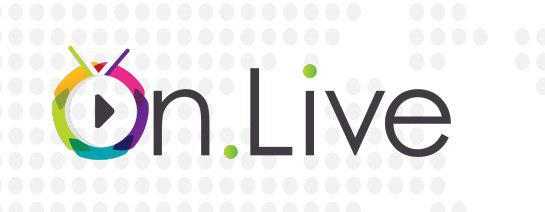Blockchain-powered streaming? On.live makes it possible
On.live is a platform that allows almost any user to become a broadcaster, and was created for streaming based on blockchain payments. The project works on a decentralized Peer-to-Peer network and can be exploited by anyone with enough bandwidth and processing power. The platform prototype already exists, and fully-fledged functionality will be launched after the main token sale.
How On.live can help?
Although the idea of the live streaming platform isn’t new, the market of broadcasting is still at the early stages of its development. While more or less developed companies have enough resources at their disposal for streaming (as a rule, they buy or rent high-capacity servers and content delivery networks), individual broadcasters lack bandwidth and processing power to organize live video sessions for multiple users.
Although such services as Instagram, Periscope, and YouTube are tailored to streaming and broadcasting, they offer a pretty limited functionality, and the quality of free video delivery isn’t sufficient enough. On.live helps streaming market overcome the next milestone and serves as the platform where viewers can find interesting channels and authors, and vice versa – broadcasters can gather audience and order resources for streaming.
Who can use On.live?
The platform is convenient for live services. Any professionals can schedule live broadcasts with chats and dedicated orders. The type of billing is optional. That makes On.live a great variant for:
- Doctors;
- Fitness instructors;
- Lawyers;
- Teachers;
- Advisors,
- and many other specialists.
Users can broadcast vis-a-vis or up to 8 viewers simultaneously.
For more massive streaming with unlimited numbers of spectators, On.live can be used by companies to broadcast conferences, tutorials, lessons, sports, workshops, learning sessions, TV, music, and so on. In this case, they can schedule the future live sessions and select billing on pay-per-views, or pay-per-minute models.
To solve the problem of resources, On.live offers network users make money by leasing their servers and providing their computing power for transcoding operations. The transactions protocol will the implemented during live streams, and network nodes will perform in real time.
On.live from a technical standpoint
What makes On.live different from its analogs is the fact that the live video streaming protocol is supported by Blockchain. That makes up for decentralization of Peer-to-Peer platform, flexibility, and openness of the market for media broadcasting around the world. Moreover, blockchain enables smart contracts that are signed when transcoders, relay nodes, broadcasters, and consumers make agreements: they ensure transparency and security of data exchanged. The content transferred between transcoders and recipients is encrypted so that no third party would be able to decrypts and access it.
The project gives anyone a chance to broadcast and earn by providing useful content and choosing the business model:
- Pay-per-minute;
- Pay-per-view;
- In-stream payment;
- Tips and donations;
- Subscription tariffs;
- Advertising.
As it has been mentioned, On.live will unite several marketplaces. On the marketplace of transcoding, the transcoders offer the formats they can cover, the capacity of the network (quality of broadcasting and the users that can be served at a time), fees, etc. Broadcaster pays in advance to cover the expenses of Transcoder even in case no one joints streaming session. The platform also allows for transmission offers between relay nodes and transcoders.
The payments will be made with ONL tokens: these will be used to cover all fees and incentivize users who broadcast, provide computing resources and attract new participants.
About On.live team
On.live is a European-based project with Chris Rybka in the head. It’s being developed by specialists in IT, telecommunications, financial, streaming, blockchain, and other sphered. The company works with well-known advisors, including Tim Luft and Mark Shaw.
ICO details
On.live has generated 111,000,000 ONL tokens for the team and sale. Unallocated tokens will be burnt. Pre-sale was organized in January-February 2018 with 12,210,000 ONL tokens available. 30% discount was rendered to early buyers. The pre-sale amount of tokens is sold at the moment. The main sale started on March 11th, 2018 and will last until April 11th, 2018 (this date is approximate – the sale may continue until the soft cap is reached). 61,050,000 ONL tokens are available for the main sale (20% and 11% discounts were available during the first 20 days of sale). By the end of the main sale, up to 6 mln, ONL tokens were distributed only. Therefore, the hard cap of 100,000 ETH is unlikely to be reached. There’s a low minimal personal cap of 0.1 ETH, and no maximum personal cap, which may be the main problem of the ICO campaign.
The contributions can be made in ETH, bank card and bank wire payments, which is convenient for those who don’t hold crypto wallets.
Token distribution
The tokens will be allocated the following ways:
- 55% - ICO;
- 11% - Pre-ICO;
- 11% ONL wallet reserve;
- 11% - founders;
- 6% - bounty;
- 5% - advisors;
- 1% - legal insurance.
The funds will be mostly spent on marketing and platform development.
Bottom line
On.live has a great potential to unite broadcasters, viewers and service providers by providing them with a convenient platform. However, the success of this project is called into question. The broadcasters will need to face the challenge of searching for transcoders with a suitable amount of bandwidth and required formats (while other platforms can provide their own computing resources).
Besides, the current amount of tokens sold proves that On.live isn’t popular enough: the team hardly managed to exceed the soft cap by the end of the main sale. Most probably, they simply won’t have enough funds for fully-fledged development of their project. Invested tokens won’t be returned since the soft cap was reached, but investors are unlikely to see huge long-term benefits.
Web * Whitepaper * Telegram * [ANN]Bitcointalk * [Bounty]Bitcointalk * Profile



